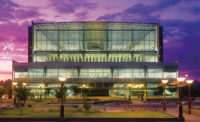AIA Honor Award: 25 Year Award Faneuil Hall Marketplace

25 Year Award Faneuil Hall Marketplace
Ben Thompson reinvented an ailing historic marketplace with the intent of creating a modern retail center to reenergize the city of Boston. The project reflects a strong commitment to urbanization and sustainability.
Photo © Medioimages/Photodisc

25 Year Award Faneuil Hall Marketplace
Ben Thompson reinvented an ailing historic marketplace with the intent of creating a modern retail center to reenergize the city of Boston. The project reflects a strong commitment to urbanization and sustainability.
Photo © Beth Broome

25 Year Award Faneuil Hall Marketplace
Ben Thompson reinvented an ailing historic marketplace with the intent of creating a modern retail center to reenergize the city of Boston. The project reflects a strong commitment to urbanization and sustainability.
Photo © Steve Rosenthal

25 Year Award Faneuil Hall Marketplace
Ben Thompson reinvented an ailing historic marketplace with the intent of creating a modern retail center to reenergize the city of Boston. The project reflects a strong commitment to urbanization and sustainability.
Photo © Steve Rosenthal



Post a comment to this article
Report Abusive Comment